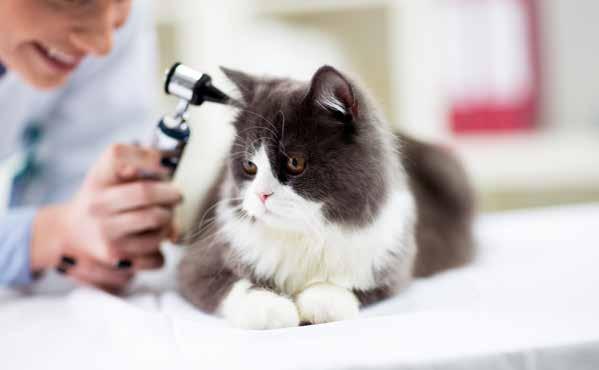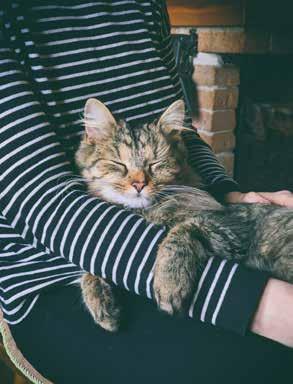
7 minute read
Animal instincts
from HealthInvestor
The UK’s veterinary and pet care sectors have attracted a great deal of private equity interest in recent years, which looks likely to continue, as Jenna Lomax reports
The veterinary investment landscape is changing. Gone are the days where local vets just offered our pooches and felines simple check-ups and a dose of worm tablets. Many more services are now available, which means investment opportunities are abundant.
Nearly half of British households own a dog or cat, equating to 11.1 million cats and 8.9 million dogs. These furry friends require a range of standard services, such as vaccinations, flea treatments, microchipping, and pet insurance policies. Though some of these are not compulsory, all are recommended.
And there’s also a booming trade in superficial ‘designer’ non-essential pet services, including grooming, animal nutrition, toys, furniture, and now even IVF canine clinics. Vet Record, a veterinary journal, found at least 37 IVF canine clinics are currently in operation in the UK – a rise from just one known clinic in 2015. This reflects Kennel Club figures that indicate there were more dog IVF births in the UK in the past three years than there were between 1998 and 2015 – a trend linked to the rise in the popularity of brachycephalic breeds – dogs with short noses and flat faces such as pugs, shih tzus, and chihuahuas.
But what is behind the rise of these kinds of services and why do the UK’s pet owners spend so much on their pets? Is it all about the ‘image? Are social media platforms such as Instagram, influencing us to buy pets with the right look, one that will attract the most likes or followers?
Could it be a trend in Western countries to ‘humanise’ pets that is encouraging owners to spend more on their pet’s care? Or could it stem from the fact that fewer people are having children, or opting to have them later, which has led to a rise in individuals and couples opting for a pet instead of children? ▶

One particular study by the Organisation for Economic Co-operation and Development, showed that women in the UK are more likely to end up without children than almost anywhere else in the West. What the experts say One reason for more income being spent on pets in the UK is “the willingness of the consumer to spend their disposable income on animal care”, says Justin Crowther, head of UK healthcare at Alantra. “Companion animal ownership levels vary by country which heavily influences demand for services.” IBISWorld, a business analytics company affirms this notion. In a recent veterinary report, it said: “The level of household disposable income influences the amount spent on veterinary fees. When real disposable income falls, households have less money to spend on veterinary services. This hampers demand for industry services. In 2019-20, real household disposable income is expected to grow, providing an opportunity for industry operators.”
It’s clear there are specific consumer choices and lifestyles that have allowed private equity investors significant opportunity within the pet care and veterinary sectors, for quite a few years now. But how has the sector grown in such a relatively short period of time and what is the secret to investing opportunities remaining so abundant? – and how long can this really last?
Crowther indicates: “Private equity, awash with liquidity, has played, and continues to play a major part in changing the shape of the veterinary care ecosystem by securing the strongest veterinary platforms and subsequently growing them aggressively.” He further explains that the UK veterinary sector is a fragmented provider landscape which, even just a few years ago, only counted for “a combined market share of less than 20%.”
But this fragmentation is, and remains, a strength as it “created a significant opportunity for businesses looking to scale rapidly and create market-leading integrated veterinary health platforms”, says Crowther. The need for such health platforms comes from the age-old law of supply and demand – in the UK these services are needed and therefore those controlling the supply will naturally try their best to keep up. But the sector is not without its struggles, particularly in the UK.
As Crowther warns: “There are a limited number of corporate groups of scale in the UK with the knowledge, scale and expertise to deliver marketleading veterinary care services.”
There are also concerns about what the market looks like post-Brexit and increasing scrutiny of some of the sector’s dealings by the Competition and Markets Authority. Crowther says: “The CMA has begun to analyse proposed transactions by region. This has a material impact on groups well-established in certain geographies. If they wish to make further acquisitions in these regions they may be restricted and, as such, other providers are exposed to relatively lower competition levels for high-quality assets. The relative lack of competitive tension has resulted in valuations somewhat plateauing and in certain scenarios has seen a decline in pricing when compared to 2018 market highs.” ▶
He adds: “To date, they are yet to put a stop to proposed acquisitions, however, their mere presence has influenced several of the leading groups to seriously consider further acquisitions. To that end, these groups have spent significant money on legal advice to ensure a completed transaction doesn’t run the risk of being unwound by the CMA.”
Staff retention and Brexit Potential restrictions on the free movement of people between the EU and the UK could significantly hinder industry performance and inflate wage costs in the years ahead, according to IBISWorld. This is because the industry is “highly reliant on EU veterinary surgeons and nurses – a decrease in the number of EU migrants could therefore result in the industry’s labour shortage worsening over time”.
The British Veterinary Association reports that, prior to the Brexit referendum, 40% of practices with vacancies already took more than three months to fill them, while figures gathered five months later, in November 2016, showed that this supply shortage had already worsened, with one-fifth of veterinary services reporting that it became harder to recruit staff following the referendum decision to leave.
But Crowther says something adding further pressure to workforce numbers is the “increasing lifestyle demands of newly qualifieds, who are seeking flexibility and incremental earnings through locum agency-style arrangements”, which he says “could slow the growth in corporatisation as this approach is inefficient for providers and results in a higher total cost of care provision”.
And where investment opportunities are concerned, Crowther says: “The more pertinent factor is the rate at which the leading groups are reaching market share saturation within domestic territories. These groups are having to look beyond their borders and a number of UK-based corporate chains have looked to Scandinavia, The Netherlands, Spain and Germany for further growth.”
Recent deals Large chains, such as Mars Petcare and Nestle have invested heavily in the UK veterinary market in recent years, with the latter announcing that it has bought a minority stake in Independent Vetcare Group (IVC) in April last year. IVC is the UK’s largest veterinary care provider and has more than 1,100 vet clinics and hospitals across the world.
The veterinary sector’s biggest companies – Mars Petcare (formerly Linnaeus), VetPartners, Medivet, Pets at Home, IVC and CVS “now account for more than 43% of total market share”, says Crowther. “It is likely that these groups, supported by their financial owners, will continue to consolidate the market further in 2020.”
And, if we take a look back over the past six months, to what these big six and others achieved, there are plenty of examples to indicate that investment didn’t slow down in the second half of 2019. During this time, IVC acquired Scarsdale Vets (Derby), which consists of Pride Referral Hospital – one of the largest veterinary hospital facilities of its kind in Europe – as well as a farm and equine practice, and 10 further veterinary practices in and around Derbyshire and Staffordshire.
Elsewhere, VetPartners acquired Parklands Veterinary Group, a Northern Ireland-based group of mixed practices with sites in Cookstown, Dungannon, Coalisland, Aughnacloy and Portglenone in mid-Ulster.
The acquisition expanded VetPartner’s portfolio to 107 small animal, mixed, equine and farm practices, with 4,600 employees working in nearly 400 sites.
Overall, revenue from the UK veterinary sector reached £3.8 billion in 2018-19, according to IBISWorld, with compound annual revenue growth of 2.4% from 2014 to 2019. But what does 2020 have in store?
What’s ahead? Last year, August Equity, the investment service, acquired Hallmarq, a veterinary imaging company. Garret Turley, partner at August Equity explained to HealthInvestor UK: “The original investment thesis around humanisation of companion animals and the rising importance of advanced diagnostics has held true and EBITDA has increased significantly in this period [Q2].”
Dissecting the sector on a national scale, IBISWorld estimates that UK revenue will amount to £4 billion for the financial year 2019-20, while Crowther predicts that investment in 2020 and beyond may not “follow the same path” as in previous years.
He outlines that future investment “may come in the form of animal nutrition, pet wearables and ‘back-office’ technologies as opposed to veterinary clinic consolidation”, but concludes “the investment community likes certainty and for the foreseeable future we believe investment will remain strong in the veterinary ecosystem.” n











